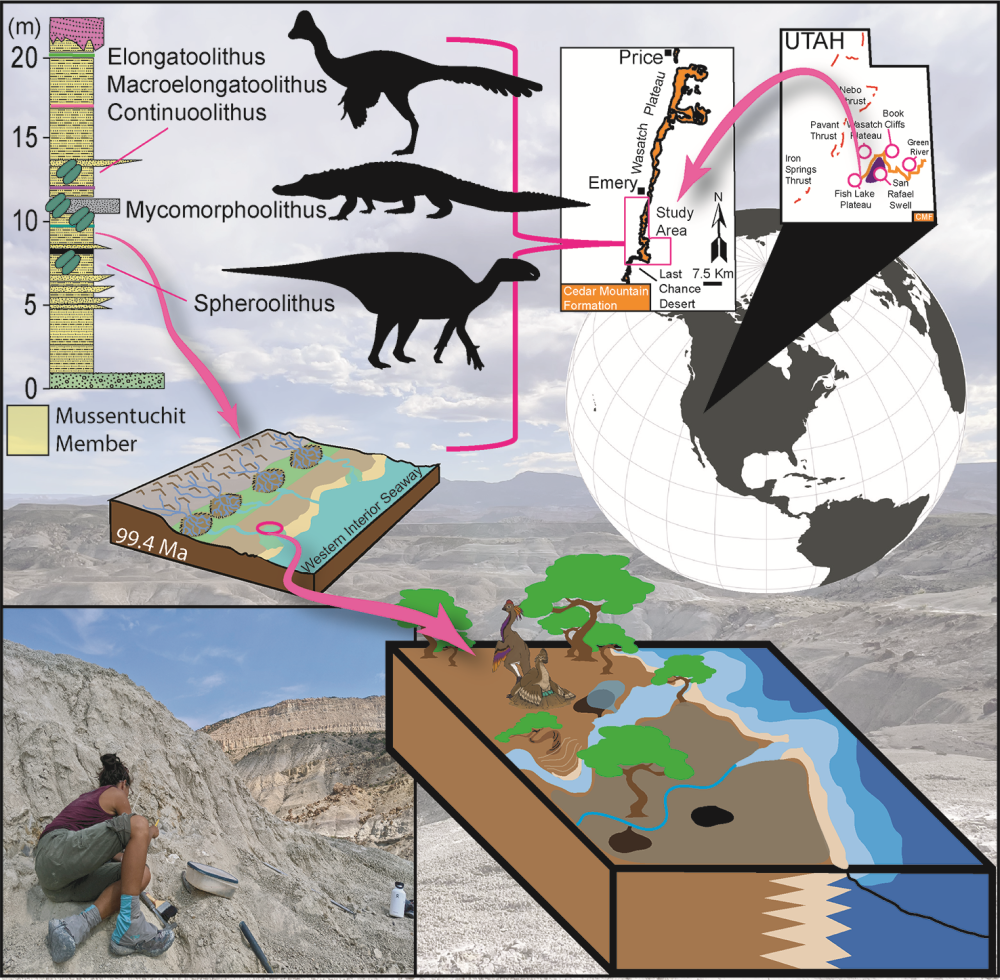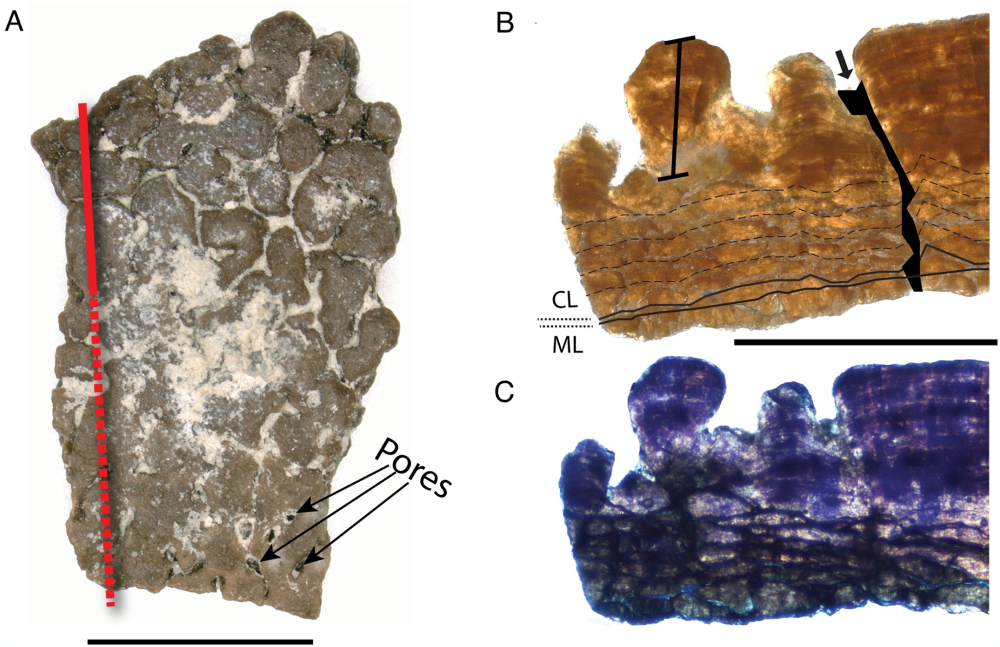The Cedar Mountain Formation in Utah is home to the Mussentuchit Member, a site where the first fossil eggshell from the Cenomanian age (~100 million years ago) was described 50 years ago. The diversity of fossil eggs – known by the fun word “oodiversity” – had been limited to just one unstable taxon, Macroelongatoolithus carlylei. Now, a team of scientists has shaken up the fossil egg record as it discovered a remarkable diversity of eggshells while prospecting in Utah.
ADVERTISEMENT
After half a century of not much to shout about in the way of fossil eggs from the region, an international team of scientists set out to determine the true diversity of eggs to be found here. Shell fragments might not be so thrilling as a giant skull, but they are a great way of searching for indicators of biodiversity when the body fossil record is limited.
Armed with over 4,000 fossil eggshell fragments from 20 locations within the Mussentuchit Member, the team categorized the fragments based on their external surface features. They also conducted detailed microscopic analyses to assess shell thickness, internal microstructure, and pore systems. They used scanning electron microscopy to spot the finer details, but telling one species’ eggshell from another isn’t easy.
“It is tricky based on eggshells alone,” said Dr Josh Hedge, Visiting Assistant Professor of Biology at Lake Forest College, to IFLScience. “We are reliant on finding associated bones, shells, whole eggs, nests, and embryos together to make the best estimates. Where we don’t have all of these, we can refer pieces of eggshell to similar types seen elsewhere. At this point, we have a pretty good idea of which types of eggshells were used by larger dinosaur groups, but it is certainly very difficult to assign them to individual species.”

A graphical abstract of the study.
Their efforts were rewarded with the discovery of newly identified eggshell types, confirming that at least six different fossil egg species (known as ootaxa) lived here around 100 million years ago. Ootaxa classify eggs based on their structural characteristics rather than directly linking them to specific species.
Three of the identified ootaxa belong to Elongatoolithidae oogenera (Macroelongatoolithus, Undulatoolithus, Continuoolithus), a group associated with oviraptorosaurs. Two others belonged to Spheroolithus, which are eggs laid by ornithopods, and the final eggshell type was identified as Mycomorphoolithus kohringi, a crocodylomorph reptile.

Features of Undulatoolithus fragment NCSM 33729. A) Surface view of NCSM 33729. The red line indicates where a thin section was made (dashed where not seen in the radial thin sections). B) NCSM 33729 in radial thin section. Tailed scale bar marks very high, undulating ornamentation. The gradational ML/CL boundary is marked with solid black lines; accretion lines in CL are shown with dashed black lines; arrows and black fill show infilled pores. C) Radial thin section under crossed polars. Scale bars equal 10 mm.
The study marks the first time several of these ootaxa have been identified in North America, including Mycomorphoolithus, which was previously only known from Europe. It’s also the earliest evidence of multiple oviraptorosaurs living in close range in North America, suggesting that these dinosaurs were more diverse and widespread than previously believed.
ADVERTISEMENT
“The most interesting thing about this for me is the multiple types of elongatoolithid eggshells, which correspond to multiple types of oviraptorosaur dinosaur,” added Hedge. “I think historically we have been guilty of thinking there is one kind of each dinosaur in a given ecosystem, but we are finding more and more that multiple species of each group are likely co-existing. Our analysis suggests that we have at least two or three oviraptorosaurs of different sizes laying eggs in this ecosystem at around the same time.”
The study supports the idea that Cretaceous North American ecosystems were more complex than previously realized, with a greater variety of nesting behaviors and species interactions. This could have implications for understanding dinosaur migration, evolutionary relationships, and ecosystem stability during the Cenomanian age.
Seems prospecting for fossil eggs really is all it’s cracked up to be.
The study is published in the journal PLOS ONE.
Source Link: 100-Million-Year-Old Dinosaur Eggs Capture Remarkable Diversity Of Utah's Ancient Ecosystems